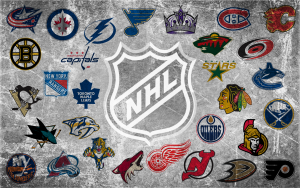
The 2016 National Hockey League Stanley Cup playoffs began April 13th and 61 days later the Pittsburgh Penguins took both the Stanley Cup and now the #1 spot in the Brand Keys 2016 Sports Fan Loyalty Index.
In the finals, the Penguins defeated the San Jose Sharks four games to two, only the second time in 46 years that no Canadian-based team qualified for the NHL post season. The Washington Capitals made the playoffs as the winners of the President’s Trophy, awarded to the team with the most points scored during the regular season, which is terrific, although we believe team loyalty represents the ultimate trophy for any sports marketer.
According to 225 fans in each of the teams’ local catchment areas, the current 2016 NHL top-5 and bottom-5 team loyalty rankings are as follows (last season’s ranking appears, in parentheses):
Top 5
1. Pittsburgh Penguins (#5)
2. Chicago Blackhawks (#1)
3. St. Louis Blues #4)/ Washington Capitals (#10)
4. Boston Bruins (#2)/ New York Rangers (#2)
5. San Jose Sharks (#4)
Bottom 5
30. New York Islanders (#25)
29. Winnipeg Jets (#28)/ Columbus Blue Jackets (#30)
28. Arizona Coyotes (#29)
27. Buffalo Sabres (#29)
26. Colorado Avalanche (#23)
While there are some differences when it comes to professional hockey, all of the emotionally-based, predictive drivers have to be taken into account when it comes to NHL team loyalty. The four emotional drivers of fan loyalty look like this:
Pure Entertainment:
How well a team does. As noted, a bit more important for professional hockey.
Authenticity:
How well they play as a team and do fans actually attend games to root for their home team.
Fan Bonding:
Are any players particularly respected and admired?
History and Tradition:
Has the game and team become part of fans’ and community rituals, institutions and beliefs?
Win-loss ratios may be the only thing when it comes to making the playoffs, and a great win-loss ratios can contribute up to a 20% bump in a team’s loyalty. But to be fair to NHL fans, loyalty in professional hockey is a little different than other major league sports. Winning contributes more to loyalty for the NHL – about 10% more for several reasons: first, the sport moves faster than the others, so more attention is necessarily paid to the Pure Entertainment driver wherein wins and losses reside. Also the scores are much closer in hockey.
For the NHL, the Authenticity driver correlates very, very highly to at-home attendance figures, and makes a slightly higher contribution to engagement and loyalty than it does for the NFL, MLB, or the NBA.
And sure, hockey fans have their favorite players, but the protective equipment makes instantaneous identification of individual players difficult, so Fan Bonding makes a slightly smaller contribution in the case of this sport.
Of the four major league sports that Brand Keys tracks in its’ Sports Fan Loyalty Index, the National Hockey League is #4 again this year. The National Football League is currently 1st followed by Major League Baseball, with the National Basketball Association in 3rd place.
Overall team rankings – no matter which league – are based on predictive engagement metrics and correlate with viewership and licensed merchandise sales and, in the case of hockey, attendance. And, since rankings can be influenced depending upon how different loyalty drivers are managed, it’s critical that NHL team marketers act as strategically off the ice as players do on the ice.
It was Wayne Gretzky, “The Great One” and the leading point-scorer in NHL history, who noted that a good hockey player plays where the puck is; a great player plays to where the puck is going to be. Great sports marketers know that same maxim can be applied to fan loyalty too.
Particularly if you have the right metrics in place.
Find out more about what makes customer loyalty happen and how Brand Keys metrics is able to predict future consumer behavior: brandkeys.com. Visit our YouTube channel to learn more about Brand Keys methodology, applications and case studies.
Share this: